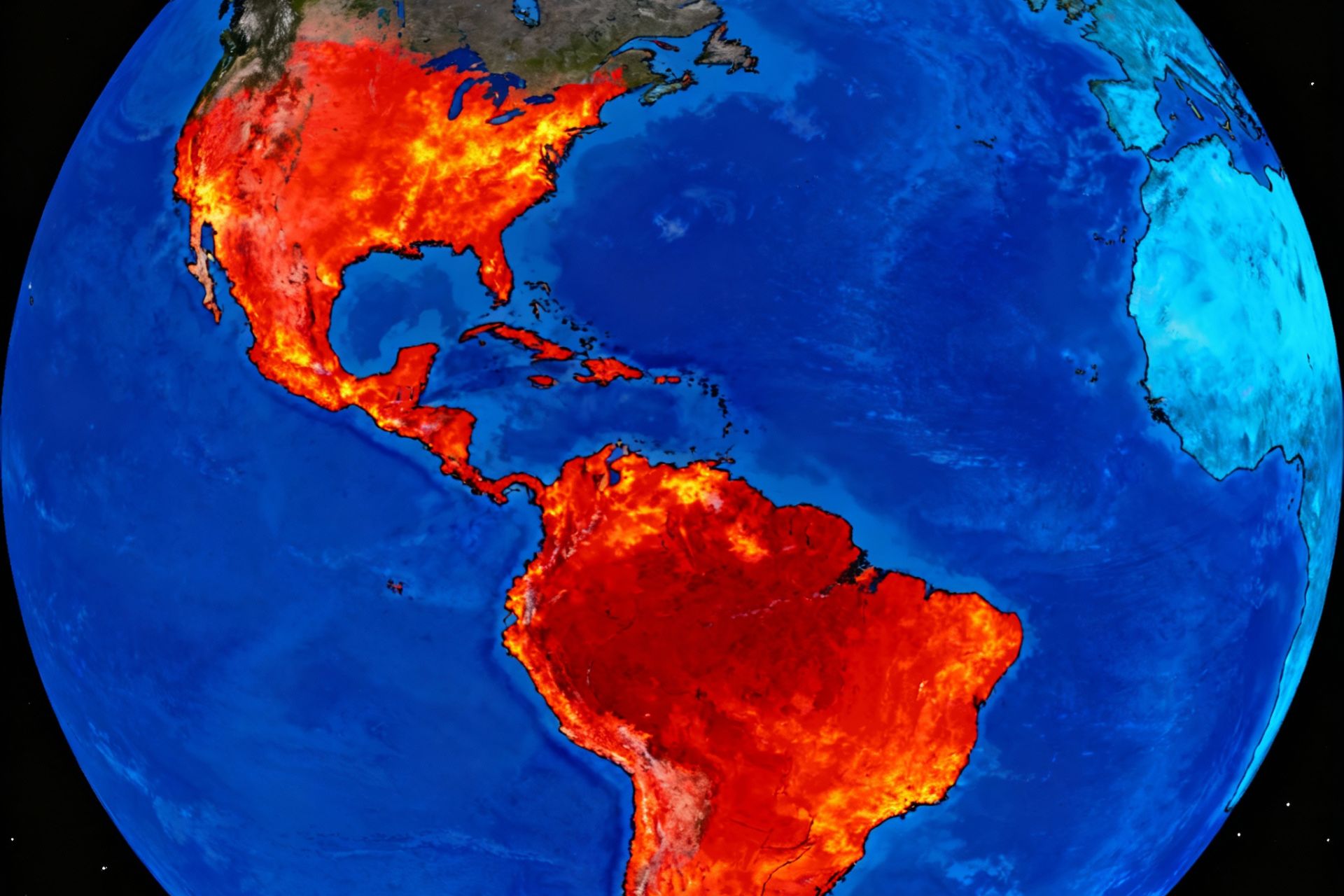El Niño and La Niña are the planet's most powerful weather-makers, capable of triggering droughts that devastate entire continents, floods that reshape landscapes, and hurricanes that rewrite storm season forecasts. These opposing climate phenomena, part of the El Niño-Southern Oscillation (ENSO), represent one of the most important sources of annual global climate variability, second only to the seasons themselves.
As we navigate through 2025, understanding these climate giants has never been more critical. La Niña conditions are currently present and expected to persist through winter 2025-26, while climate models predict a transition back to neutral conditions by early 2026.
What Are El Niño and La Niña? The Climate Seesaw Explained
El Niño, Spanish for "little boy" or "Christ Child," was first noticed by Peruvian fishermen in the early 17th century who observed unusually warm Pacific waters around Christmastime. La Niña, meaning "little girl," represents the opposite phenomenon with cooler-than-normal Pacific waters.
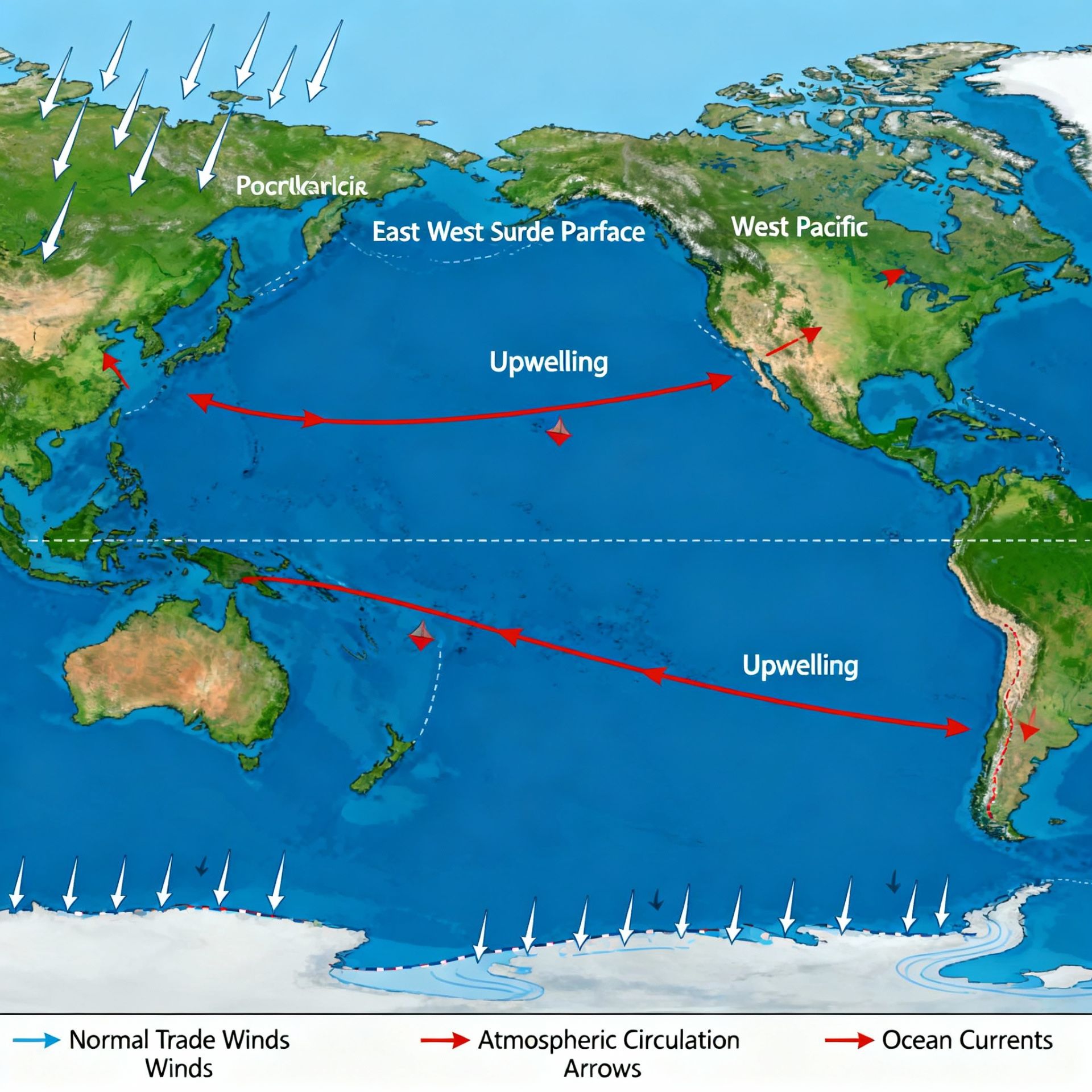
These aren't just regional weather quirks—they're massive disruptions to the global climate system that occur every 2-7 years and can reshape weather patterns across entire hemispheres. The phenomena are driven by complex interactions between ocean temperatures and atmospheric circulation across the Pacific Ocean, creating a climate seesaw that affects billions of people worldwide.
The Science Behind the Seesaw: Walker Circulation
At the heart of ENSO lies the Walker Circulation—a massive atmospheric conveyor belt that moves air across the Pacific Ocean. Under normal conditions, trade winds blow from east to west, pushing warm surface waters toward Asia while allowing cold, nutrient-rich water to upwell along the Americas' coast.
During El Niño events, this circulation weakens dramatically or even reverses. Trade winds lose strength, warm water sloshes eastward, and the entire atmospheric pattern shifts. During La Niña, the system goes into overdrive—trade winds strengthen, the warm water pool in the western Pacific becomes even more intense, and upwelling along the Americas increases.
The Dramatic Global Impacts: When Weather Goes Extreme
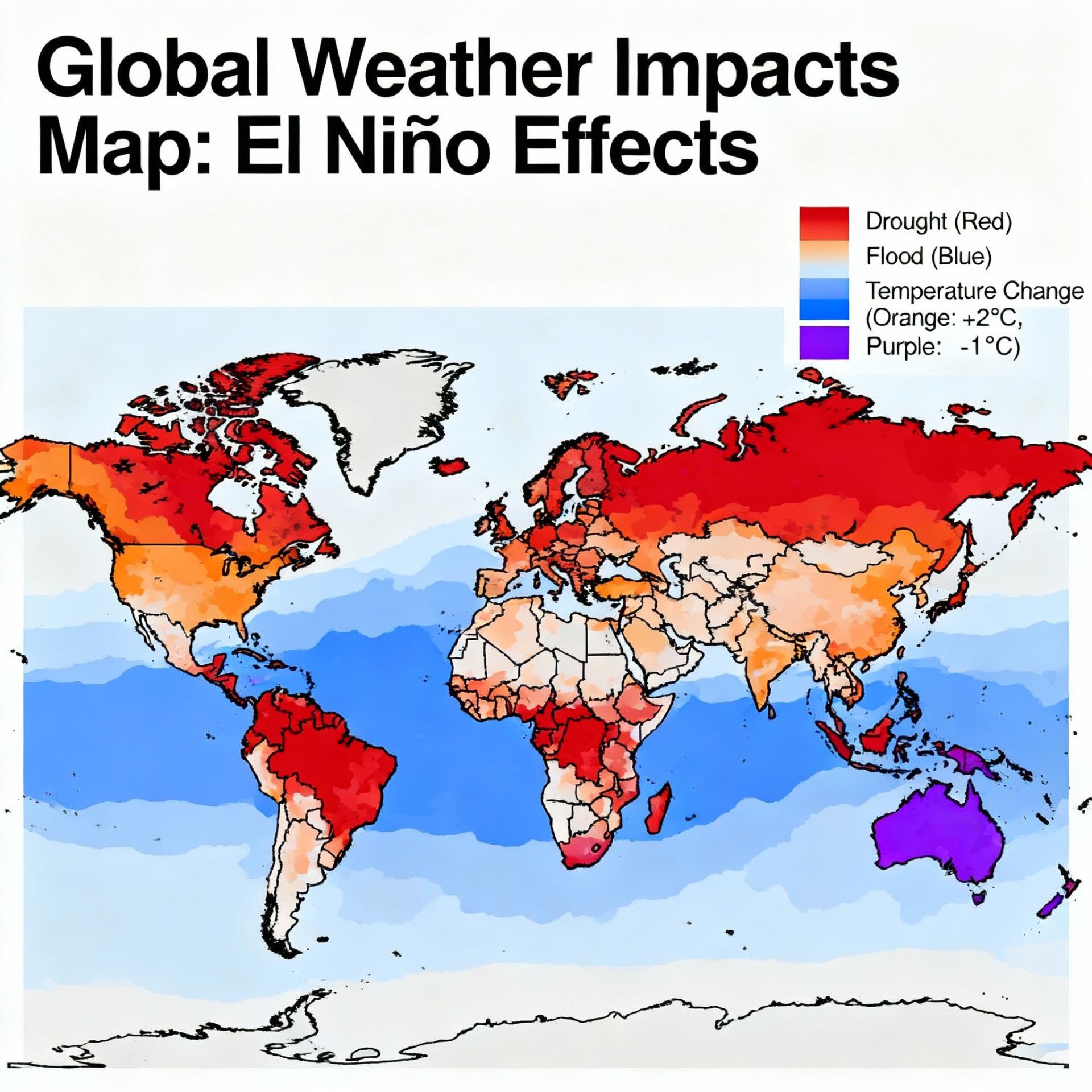
El Niño: The Weather Disruptor
When El Niño strikes, it reshapes weather patterns across the globe with often devastating consequences:
In North America, El Niño typically brings milder winters to the northern United States and Canada while drenching the southern states with above-normal rainfall. California and the Southwest often experience relief from drought conditions, but this comes with increased flooding risks.
Globally, El Niño suppresses Atlantic hurricane activity due to increased wind shear, but enhances Pacific storm development. Australia faces severe drought conditions, while parts of South America experience intensified rainfall.
La Niña: The Climate Intensifier
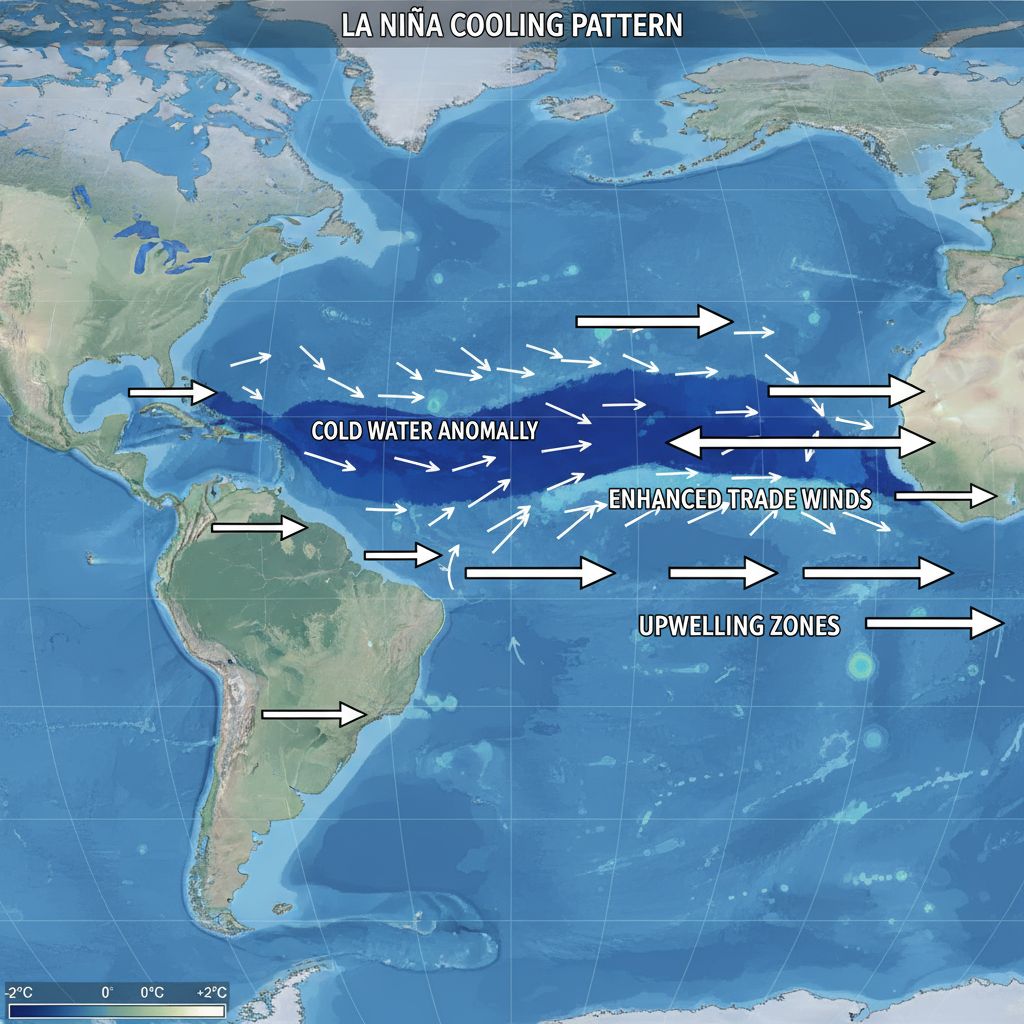
La Niña events often prove even more disruptive, lasting longer and creating more persistent weather anomalies:
In North America, La Niña brings cooler, wetter winters to the Pacific Northwest and northern states, often resulting in heavy snowfall. Meanwhile, the southern United States experiences warmer, drier conditions that can exacerbate drought.
Hurricane seasons become supercharged during La Niña years, as reduced wind shear in the Atlantic allows storms to develop and intensify more easily. This makes La Niña years particularly dangerous for coastal communities.
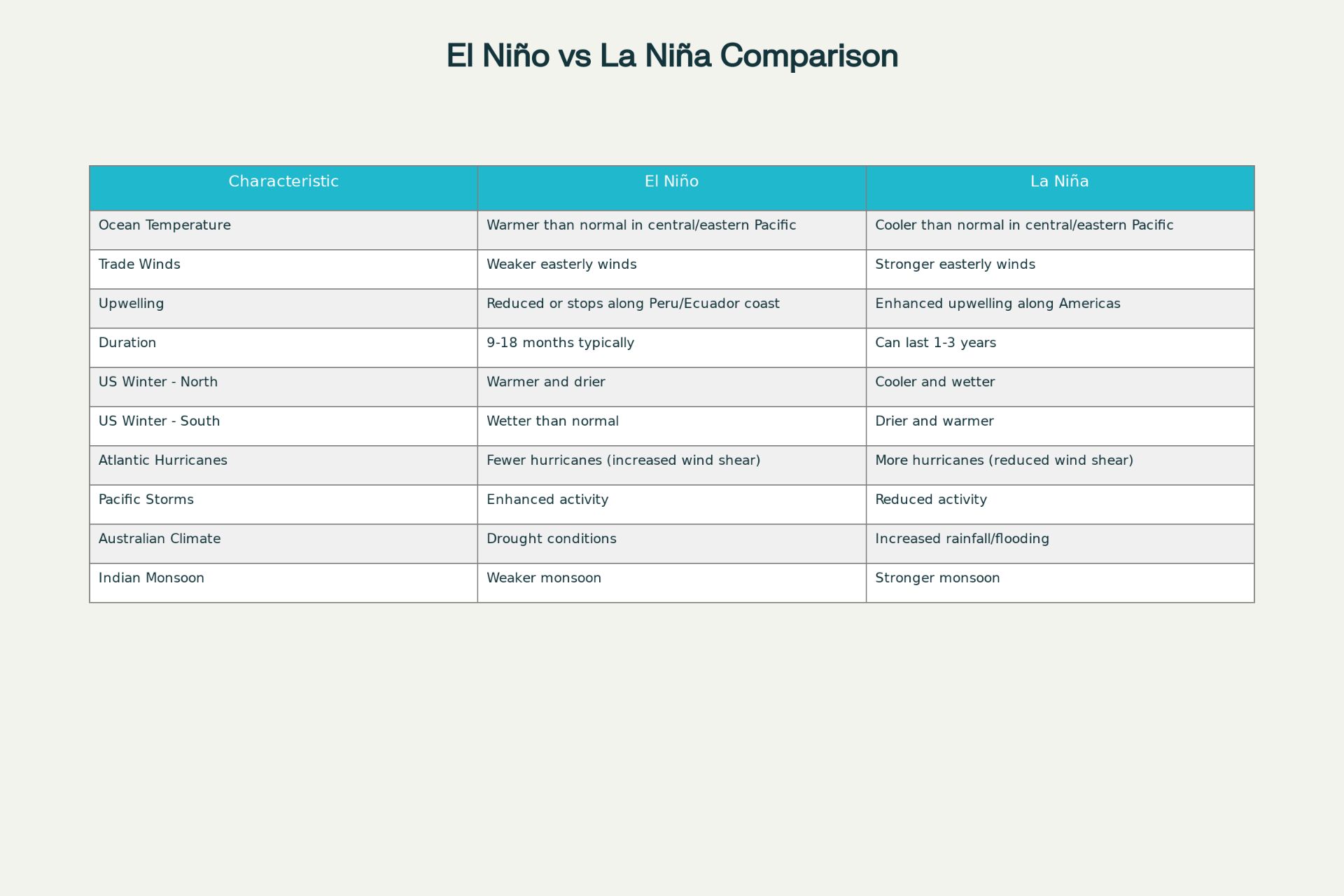
Health and Agriculture: The Hidden Consequences
Beyond weather disruption, ENSO events trigger cascading effects on human health and food security that can persist for years.
Disease Outbreaks and Public Health
ENSO events are directly linked to disease outbreaks worldwide. El Niño conditions can amplify endemic diseases like dengue, malaria, and cholera by altering the habitats of disease vectors. The 2015-16 El Niño led to early warnings for global disease outbreaks that proved remarkably accurate.
In tropical regions, El Niño-driven drought and temperature changes alter mosquito life cycles, potentially amplifying dengue fever outbreaks. Meanwhile, La Niña's wetter conditions can increase malaria transmission in regions where Anopheles arabiensis mosquitoes breed in temporary rain pools.
Agricultural Devastation and Food Security
Agriculture bears the brunt of ENSO's impact. During El Niño years in the southeastern United States, corn yields typically fall below historic averages, while frequent rains delay harvests of summer crops like corn, peanuts, and cotton. Winter vegetable yields suffer, and fungal diseases intensify.
Since 1950, out of 13 droughts that India faced, 10 occurred during El Niño years, demonstrating the phenomenon's devastating impact on global food production.
2025 and Beyond: What the Climate Models Are Predicting
As of October 2025, La Niña conditions have formed and are expected to persist through the winter of 2025-26. This weak La Niña event is predicted to transition back to neutral conditions by early 2026.
Current Conditions and Forecasts
The latest climate models show a 60% probability of La Niña persisting through December 2025. Sea surface temperatures in the central Pacific have cooled below normal, and atmospheric indicators confirm the La Niña pattern is established.
This winter's La Niña could bring:
Cooler, snowier conditions to the northern United States and Canada
Warmer, drier weather to the southern United States
Enhanced Atlantic hurricane activity (though the 2025 season is winding down)
Increased rainfall in Australia and Southeast Asia
Looking Ahead: The Return to Normal
Climate scientists expect ENSO-neutral conditions to return by spring 2026, with most models showing a gradual warming of Pacific waters. However, some forecasts suggest another El Niño could develop by 2026-27, potentially bringing another round of global weather disruption.
Climate Change's Wild Card: How Global Warming Affects ENSO
While ENSO is a natural phenomenon, climate change is altering its behavior in concerning ways. The IPCC's Sixth Assessment Report concludes that "precipitation variance related to El Niño–Southern Oscillation will very likely increase" under continued warming.
Global warming may be intensifying ENSO's extremes, making wet periods wetter and dry periods drier. This amplification means future El Niño and La Niña events could produce even more severe droughts, floods, and weather disasters than those we've experienced historically.
The Bottom Line: Preparing for an Unpredictable Future
El Niño and La Niña represent nature's most powerful climate control systems, capable of overriding normal weather patterns and triggering cascading effects across human societies. As we face a La Niña winter in 2025-26, communities worldwide must prepare for the characteristic patterns these events bring.
The good news is that ENSO events are predictable several months in advance, providing crucial lead time for disaster preparedness, agricultural planning, and public health responses. Early warning systems leveraging ENSO predictions have already proven their worth, helping communities brace for extreme weather and disease outbreaks.
Understanding El Niño and La Niña isn't just academic curiosity—it's essential knowledge for navigating our increasingly volatile climate future. As these climate giants continue their eternal dance across the Pacific, their impacts will only grow more significant in our interconnected, warming world.
The next time you hear about an El Niño or La Niña forming, pay attention. These aren't distant weather events—they're global climate controllers that could be reshaping the weather outside your window within months.
